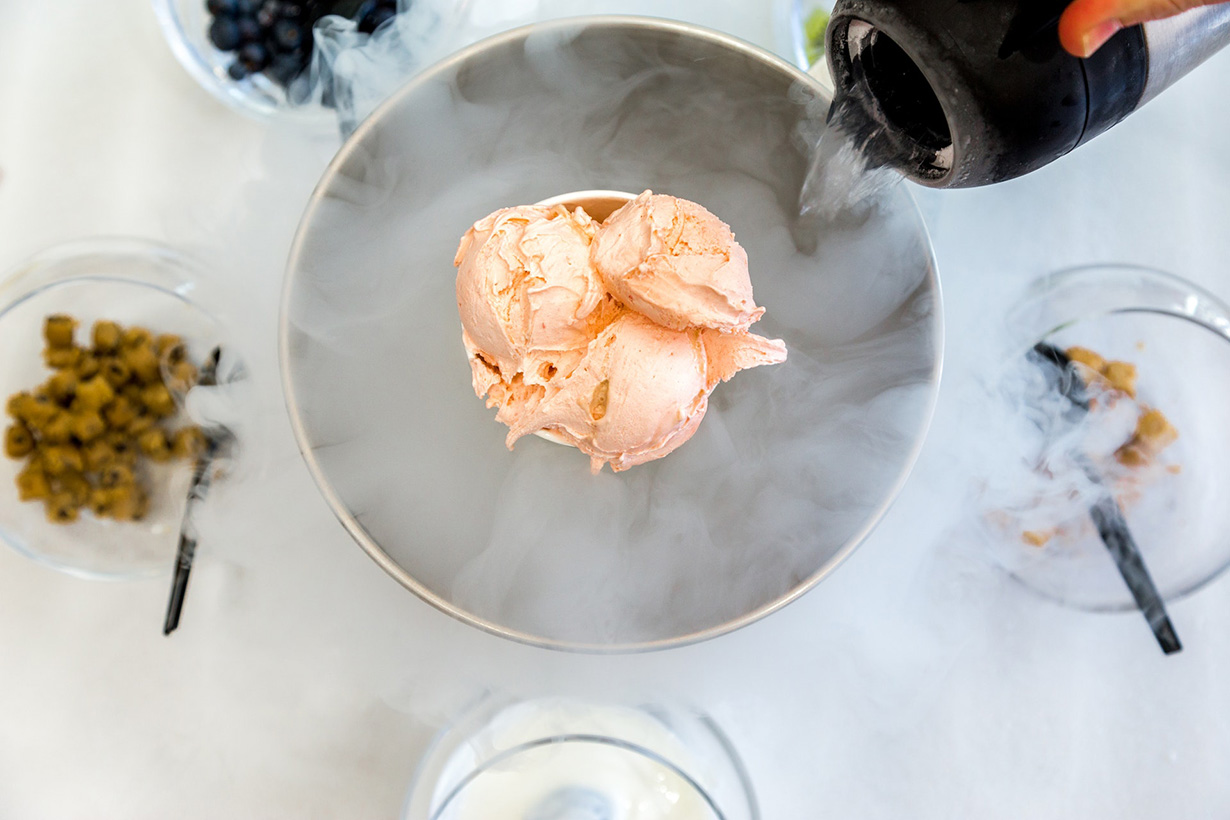Molecular gastronomy: chemistry in the kitchens of great chefs
Cooking and chemistry may seem like two seemingly distant worlds. The reality is quite different: foams, gels and cascades of liquid nitrogen are just some of the protagonists of 'molecular cuisine'.
The use of sodium alginate is just the latest example of how this fashion has caught on even in the finest restaurants, finding both followers and detractors.
A break with the past
The most traditionalists often turn up their noses at this new and certainly innovative practice: the basic premise is the absence of cooking as commonly understood, so as to preserve the properties of the food as much as possible. Substances capable of reacting physically and chemically with the raw materials concerned, keeping the flavours intact or even concentrating them, are substituted.
The processes in this field are the most diverse, with gelling and spherification being among the most common. In particular, it is the latter that leads the way with the creation of globules (also called 'caviar' or 'drop', precisely) within which the flavours are ready to be released once broken during chewing: a novelty not only from a visual point of view, but above all in terms of consistency and taste perception.
Chemistry
In the method of spherification, the indispensable element is sodium alginate: this is a salt obtained from brown algae which, in nature, gives it particular flexibility needed to withstand even sustained wave motion. It is easy to see how this property is instrumental in creating what may resemble marbles whose outer consistency is elastic and thus able to enclose a liquid inside.
Two types of spherification can be used: basic and reverse.
In the first case, the Algin must be added to the mixture that is to be spherified, and it must then be poured into the calcic bath using a syringe (without needle) or moulds. In contrast, in the reverse process, calcium must already be found in the food before it is transformed into the characteristic pearls. All that needs to be done is to mix and leave it to rest so that the preparation takes the desired shape and can be immersed in the sodium alginate bath. This way, the product will be storable and usable over time, unlike using the basic process, which requires immediate use.

